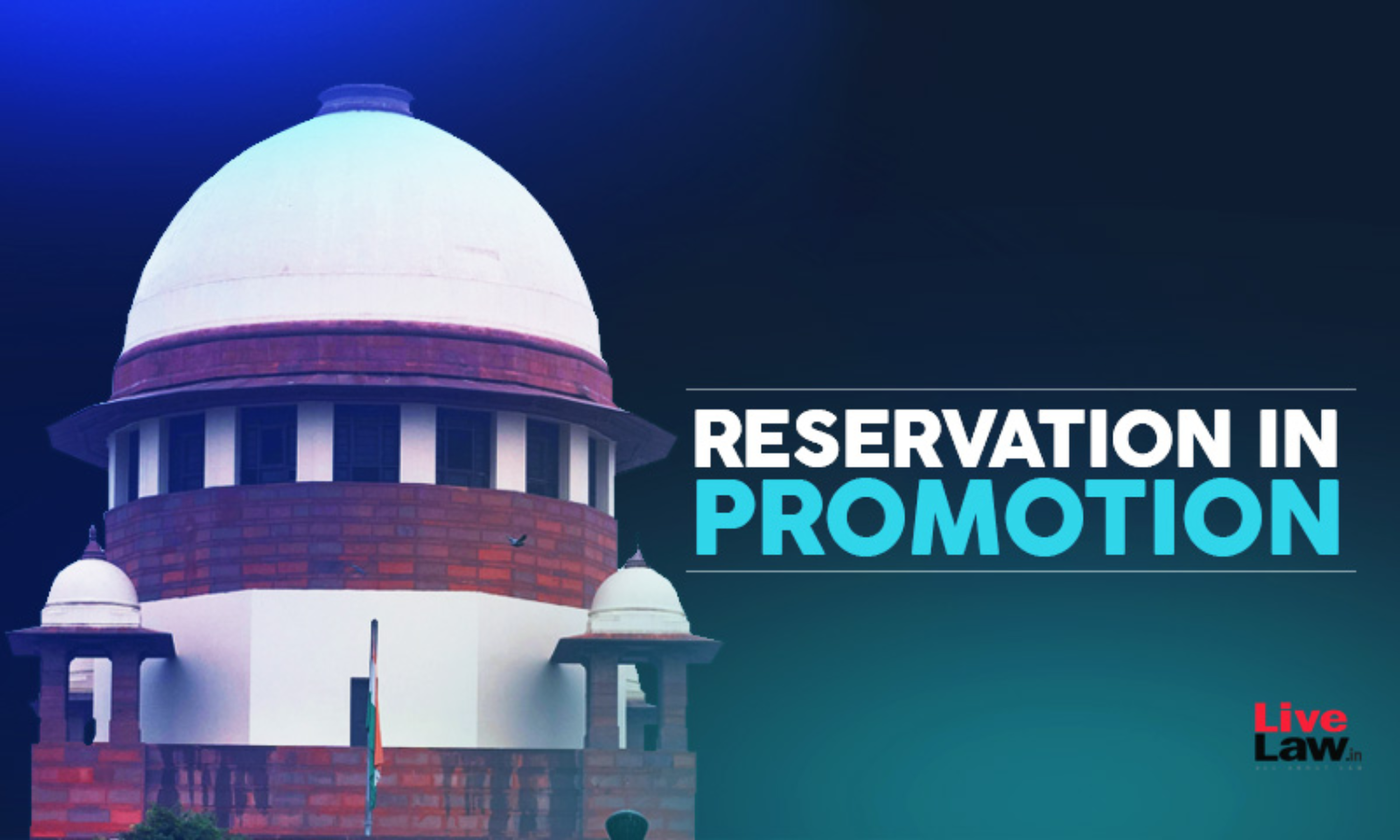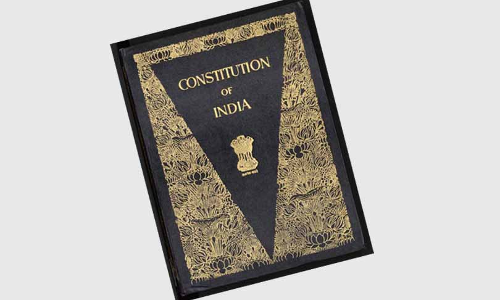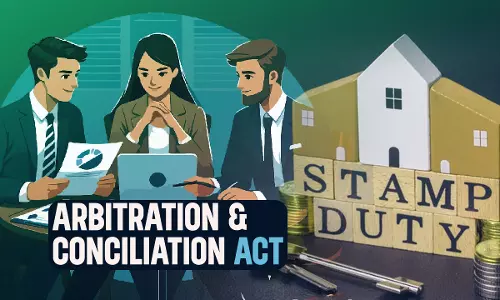
The casteless outcastes of Indian society, subjected for centuries to unfathomable social suppression and economic depravity have been compiled together as the Scheduled Castes and Scheduled Tribes (hereinafter "SC/ST") under the Constitution. Their plight has been described in various ways. Rabindranath Tagore described it as a "gigantic cold-blooded repression". Dr. B.R. Ambedkar...
The casteless outcastes of Indian society, subjected for centuries to unfathomable social suppression and economic depravity have been compiled together as the Scheduled Castes and Scheduled Tribes (hereinafter "SC/ST") under the Constitution. Their plight has been described in various ways. Rabindranath Tagore described it as a "gigantic cold-blooded repression". Dr. B.R. Ambedkar termed it as a system of "graded inequality". Swami Vivekananda spoke for Shudra Raj and questioned the heredity claims of the Brahmanas, while calling out to "Arise, awake and stop not till the goal is reached".
To ameliorate the lot of these SC/ST's reservation in promotion has been provided for. The issue can be broadly classified in two categories, namely, the pre and post Indra Sawhney (1992) eras.
The pre Indra Sawhney era.
Contrary to popular perception, reservation in matters of promotion was upheld by the Supreme Court even prior to the introduction of the 77th and 85th Constitutional Amendments. Article 16(4) permits the State to make any provision for reservation of appointment of posts in favour of any backward class of citizens which, in the opinion of the State, "is not adequately represented in the services under the State". Although, the expression used in the aforesaid sub-clause (4) was "reservation of appointments or posts" and not "promotion", the Supreme Court consistently interpreted the said provision as permitting reservation in matters of promotion as well. So, in Rangachari (1962), Justice Gajendragadkar upheld reservation at the promotion tier for selection posts. It was opined that "adequately represented" encompassed "size" as well as "values". The numerical and qualitative tests were both to be applied to determine adequacy and the State could, therefore, take the view that a certain percentage of selection posts should also be reserved, the adequacy of such representation being considered qualitatively. After about 20 years, a prayer was made in Karamchari Sangh (1981) that Rangachari required to be reconsidered. In rejecting the said prayer, Justice Krishna Iyer said that a "Constitutional proposition on which a whole nation directs its destiny are not like Olympic records to be periodically challenged and broken by fresh exercises…….". Justice Iyer felt that real power could be shared by the weakest sections only if the doors of the higher desks were opened to them. The higher echelons are the real controllerates and not just the menial levels. Further, Article 16(4) was not meant for Harijans to only become scavengers and sweepers, but officers as well. In the interregnum, a Bench of seven Judges had in N.M. Thomas (1976) also upheld the said view.
Indra Sawhney (1992) – The erroneous rationale:
After noticing that Rangachari had held the field for about 30 years, Justice Reddy placed reliance on the observation in Rangachari that there was "the risk" involved in sacrificing efficiency of administration. Therefore, the 9 Judge Bench in Indra Sawhney took the view that there was no justification to multiply "the risk" which would be the consequence of holding that reservation can be provided in matters of promotion. It is submitted that the observation in Rangachari was in the context of Article 335 and the obligation of the State to consider the claims of the backward classes consistently with the maintenance of the efficiency of administration. Rangachari only required that "the risk involved in sacrificing the efficiency of administration must always be borne in mind when any State sets about making a provision for reservation of appointments or posts." The said observation is the mandate set out under Article 335 of the Constitution and ought not to have been the basis for negating the law as it stood for over three decades. Further, Indra Sawhney went on to permit reservation in matters of direct recruitment even in higher levels of administration and not merely at the level of Class III and Class IV. The said view begged the question that if reservation by way of direct recruitment was permissible for Class I and Class II posts, then why not by way of promotion?
The 77th Constitutional Amendment (1995) and the 85th Constitutional Amendment (2001)
Indra Sawhney upheld reservations already made and while holding that it's aforesaid decision of striking down reservations shall operate only prospectively, it also permitted reservations which had already been provided in matters of promotion to continue to operate for a period of five years from that date. In the intervening period, Article 16(4A) was introduced by way of the 77th Constitutional Amendment w.e.f. 17.6.1995 and reservation in promotion was bought back. Consequential seniority was also provided by way of the 85th Constitutional Amendment given effect from 17.6.1995. The said amendments became the subject matter of challenge before the Constitution Bench in Nagaraj (2006). The amendments were upheld but with the additional mandate that the State will have to show the existence backwardness, inadequacy of representation and overall administrative efficiency before making provision for reservation in promotions. While Indra Sawhney required that the State can utilise the material it already had in it's possession, Nagaraj laid down that the State "has to collect" quantifiable data. This was subsequently interpreted by the Supreme Court to mean that a fresh exercise had to be carried out to collect quantifiable data to determine inadequacy of representation. This is contrary to Indra Sawhney as explained hereinafter. The requirement of establishing backwardness of SC's and ST's has been struck down in Jarnail Singh (2018) since SC's and ST's are "indubitably" backward as per Indra Sawhney.
Adequacy of Representation – Who is to determine?
Indra Sawhney in categoric terms held that since Article 16(4) used the words "in the opinion of the State", the requirement of adequate representation was a matter "within the subjective satisfaction of the State". The State could form that opinion on the basis of material "it has in its possession already or it may gather such material through a Commission/Committee ….". "All that is required is, there must be some material upon which the opinion is formed. Indeed, in this matter, the Court should show due deference to the opinion of the State, which in the present context means the executive." The Supreme Court went on to say that the scope and reach of judicial scrutiny in matters within subjective satisfaction of the executive, as laid down Barium Chemicals (1967) would apply for the said purposes as well.
The test laid down in Barium Chemicals required that there should exist circumstances which, in the opinion of the Authority, justified the action taken. In Rohtas Singh (1969), Barium Chemicals was explained to mean that the formation of the opinion was subjective but the existence of circumstances relevant to the inference as the sine qua non for action must be demonstrable. It was held that the existence of circumstances in question were open to judicial review, the opinion formed by the Government was not amenable to review by the Courts. The same view was reiterated Rustom Cooper (1970) and thereafter again in Bhikhubhai (2008) and has continued to hold the field.
In spite of the above, the Supreme Court has continued to strike down reservations made by the State on the ground of inadequacy of representation by following the tests laid down in Nagaraj and by examining each issue in detail wherein it has sometimes substituted its own opinion for the opinion of the State. It is in B.K. Pavitra (2019) that the Supreme Court recognized the complementary principles of the executive arm being aware of prevailing conditions and the opinion of the government on adequacy of representation forming a part of the subjective satisfaction of the State.
The Origin of the Four-fold Classification
In ancient times the classification was not based on "caste" as is presently understood nor was it on the basis of birth. On the contrary, four-fold classification was based on the "Gunas" of a person. Lord Krishna describes three Gunas in the Bhagawad Geeta in Chapter XIV. The "Sattwa Guna" denotes purity, luminosity, selflessness; the "Rajas Guna" denotes passion, activity and attachment to action and the fruits of action; the "Tamas Guna" is borne of ignorance, lethargy, selfishness and delusion.
Lord Krishna went on to say the following :
- If the embodied one meets with death when SATTWA is predominant, then he attains to the spotless worlds of the "Knowers of the Highest".
- Meeting death in RAJAS, he is born among those attached to action; and dying in TAMAS, he is born in the womb of the senseless.
17. Knowledge arises from SATTWA, greed from RAJAS, heedlessness, delusion and also ignorance arise from TAMAS.
(Translation from the commentary of the Bhagawad Geeta by Swami Chinmayanandaji)
Based on the above Gunas, a four-fold classification has been made in the Geeta. So, the Brahmanas are those with a major portion of Sattwa, a little Rajas and with minimum Tamas; the Kshatriyas have mostly Rajas, some Sattwa and a bit of Tamas; the Vaishyas have mostly Rajas, then Tamas and hardly any Sattwa; and the Shudras have mostly Tamas, a little Rajas and with virtually no Sattwa.
The Brahmana, who was in a state of Sattwa, could control his sense organs and had mastery over his mind and could in meditation dwell on the Infinite. The grant of the Brahmana status on the basis of birth is unknown to the scriptural teachings of Lord Krishna. The caste system established on the basis of birth is a distortion which is deliberately practiced by the Brahmanas in a self-serving manner.
The Kshatriyas, in whom the dominant quality was Rajas, would be attached to his action and would engage in new endeavours to gain more and more prowess and splendour. But, his Rajas Guna was coloured by some Sattwik qualities because of which he would also be generous and would have other noble qualities of benefitting other people.
The Vaishyas would have a domination of the Rajas quality, which would be supplemented by the nature of Tamas. So the Vaishya would be engaged in action, but would not be having the nobility of the Kshatriyas. He would be greedy on account of the Tamas Guna.
The Shudras were those who were of the lowest category since they had a domination of Tamas and were the kind of persons who would be lazy or those remaining in a state of intoxication.
The lower categories could move up by increasing the Sattwa Guna and by reducing the Tamas Guna and vice versa. Thus, the same person could fall in different classifications at different times, depending on his inner disposition. A perfectly valid classification, having a spiritual basis was distorted by those who claimed to be Brahmanas and who continued the distortion by granting the "caste" on the basis of birth. A so-called Brahmana by birth, whose predominant trait was, in fact, Tamas, would ruin the temple where he sits as a priest. Similarly, a so-called Shudra (on the basis of birth), who was, in fact, endowed with Sattwik qualities would raise even ordinary menial jobs to a high spiritual level. This spiritual four-fold classification has been denigrated by various self-serving expositions resulting in the convoluted system that is in vogue today.
Conclusion
While it is true that various benefits have been granted to the backward classes for many decades since independence, it is equally true that their condition continues to remain pitiable. Along with other steps, one can perhaps take guidance from the scriptures. Lord Ram granted the boon of Bhakti to the khewat who met him on the banks of the Holy Ganges. The same grace was showered on the backward tribal Nishad Chief who accompanied Lord Rama in the forest. Even when Bharatji embraced the Nishad Chief, Tulsidasji records in Shri Ramcharitamanas that he felt as if he had embraced Lakshmana and could not control the love in his heart.
(Manahu Lakhana San Bheta Bhaee, Premu Na Hridaya Samai)
The examples set out in these scriptural texts are required to be given effect to if the injustice meted out to these classes is to be permanently eradicated. Love, compassion and enfoldment can do wonders. Sir Martin Luther King had said:
"Darkness cannot drive out darkness: only light can do that. Hate cannot drive out hate: only love can do that."
Till then a SC will remain a SC. No matter what position he occupies.
Views Are Personal Only.




